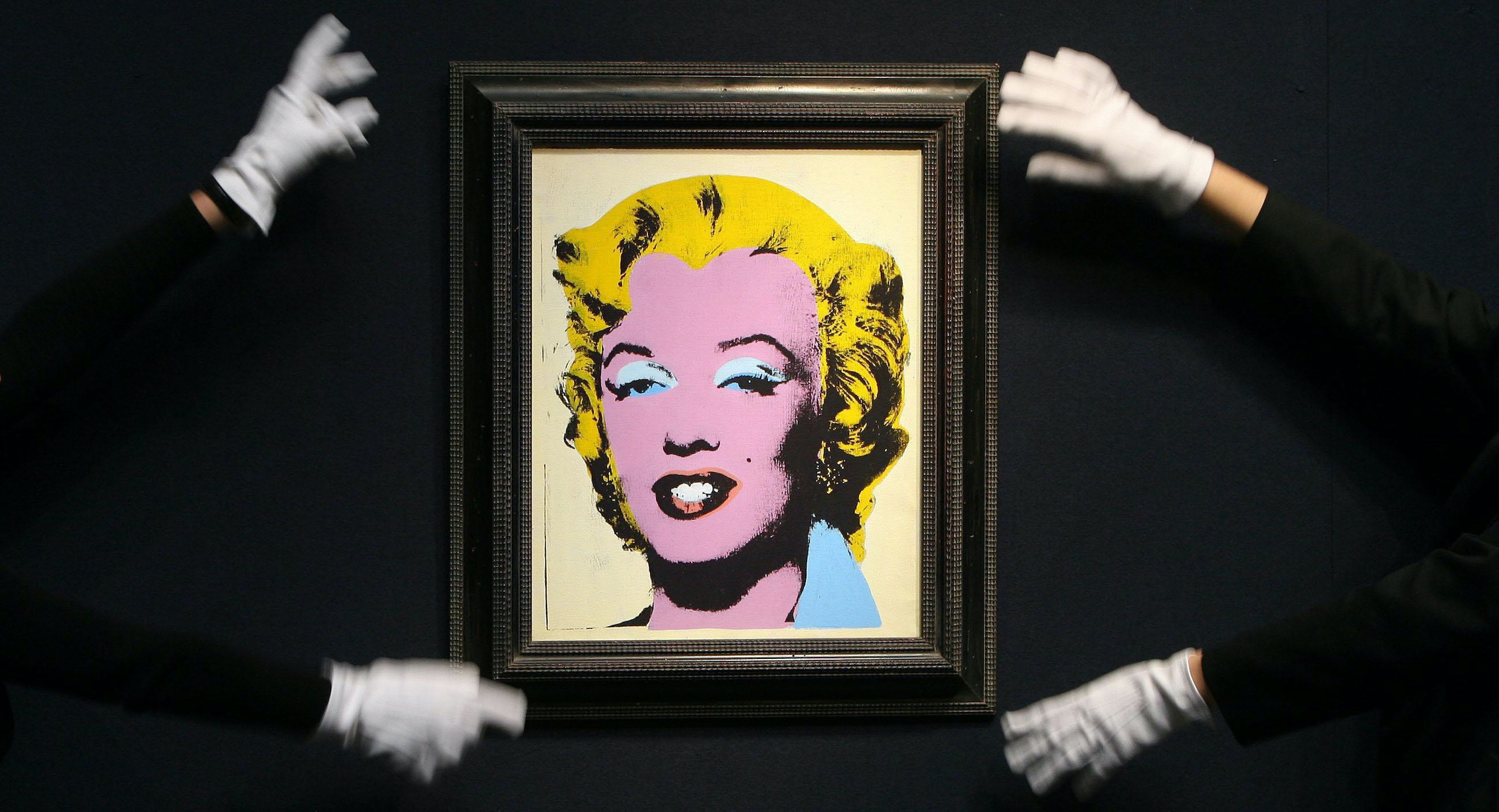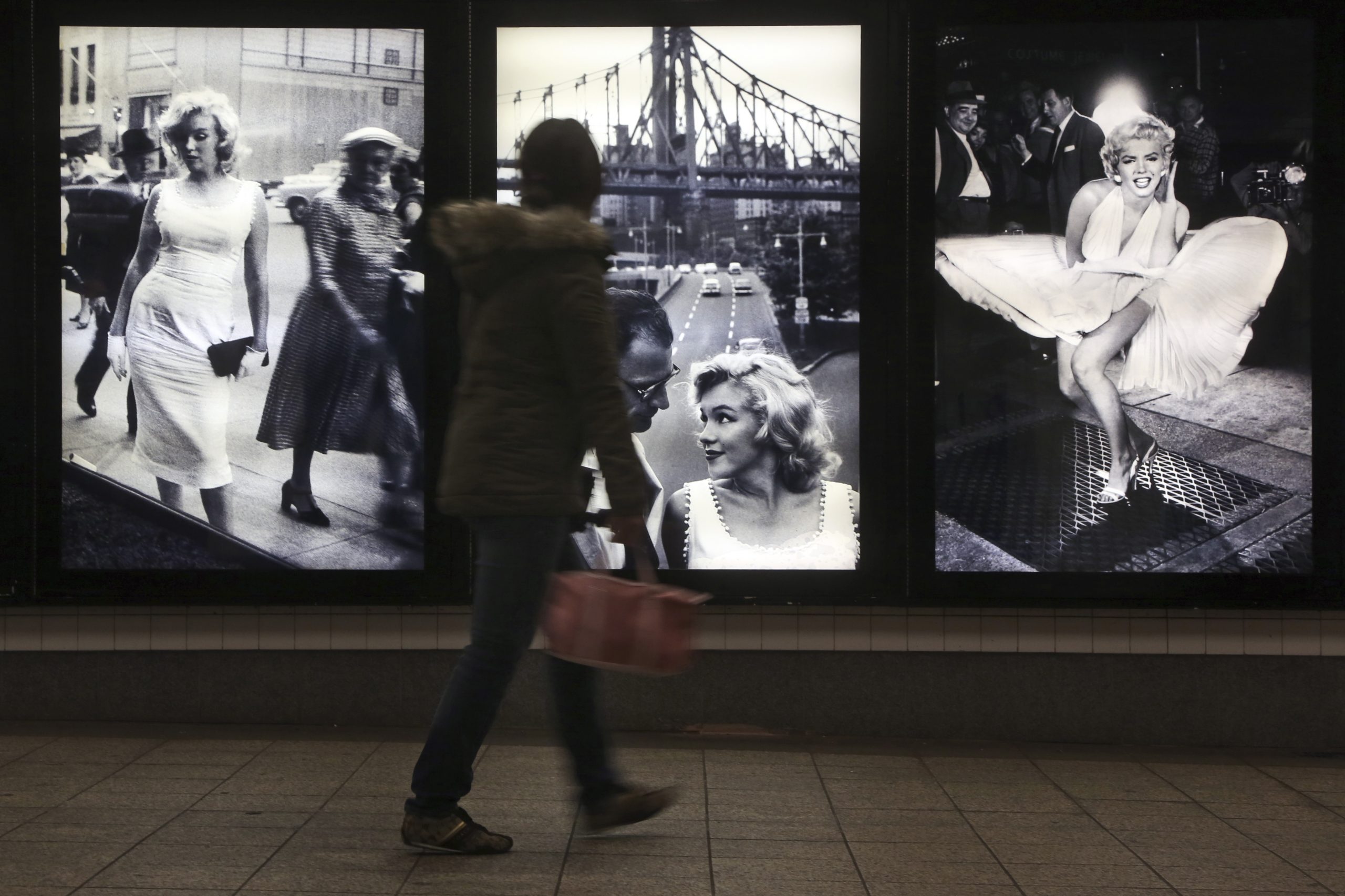What’s the difference between Ana de Armas and a porn star? When the latter feigns gagging while engaged in a sex act on camera, at least she’s not willfully abusing, sodomizing, and degrading the legacy of a dead woman.
Technically, as the voiceover in the Netflix biopic Blonde tells us, de Armas, here playing Marilyn Monroe orally servicing President John F. Kennedy, is actively trying not to gag. Her overwrought, inexplicably Cuban-accented monologue describing her distaste of the sexual act serves as a microcosm for the problem plaguing the entire film: Director Andrew Dominik, who makes it abundantly clear that he loathes Monroe, has transformed the sexy, clever, and complicated late actress into a pathetic caricature, a sex doll with no comedic acting chops or sense of personal or sexual agency.
ANDY WARHOL’S MARILYN MONROE POTRAIT SET TO HIT AUCTION AT $200 MILLION
Dominik’s first-ever film about a woman (there’s a shocker) made most of its headlines for landing a commercially dangerous NC-17 rating, but the problem with the film isn’t the nudity, violence, and sexual exploitation that scored it the rating. Rather, it’s that the nudity, violence, and sexual exploitation are the only things in a film ostensibly about one of the most interesting women of the 20th century.

Blonde begins with the very real origin story of Monroe, nee Norma Jeane Mortenson, who was abandoned by her father, abused by her mother, and then abandoned, again, when the latter was admitted into a mental hospital.
The rest of the film features a grown-up Marilyn, first a pin-up girl trying to make it big and then the A-list star who defined an era, being raped, beaten up, or otherwise abused by a series of men she calls “Daddy.” This continues with near-zero exploration into her artistic journey, career climbing, famous friendships, feuds, or political exploits until she dies. But only after spending a mind-numbing half hour in a topless, strung-out stupor sobbing about — you guessed it — her long-lost daddy who never came back for her.
To his credit, Dominik has never pretended his film is anything other than a masturbatory deepfake allowing him to manipulate a poor imitation of Miss Monroe into his own fantasies. When a journalist asked Dominik about his decision to exclude crucial and cinematic episodes of her life — for example, her public opposition to the anti-communist campaigns of the House Un-American Activities Committee that landed her in the crosshairs of the FBI — Dominik simply said the film wasn’t about “that stuff” and that nobody watches Monroe’s filmography anymore:
“It’s about a person who is going to be killing themself.”
OK, but Dominik seems utterly uninterested in the totality of why that person killed herself, and half of his own explanation in the film is fully fabricated. Although famous producer Darryl Zanuck was widely considered the Harvey Weinstein of his own time, there is zero evidence that he ever raped Monroe as the film decides to depict. There is zero evidence that Monroe’s many passionate paramours included a throuple with the sons of Charlie Chaplin and Edward G. Robinson — inexplicably the only sexual relationship in the entire film from which the famously sexual Marilyn seems to actually derive fun and pleasure. And there is zero evidence that Marilyn, who desperately wanted to become a mother and couldn’t due to her endometriosis, ever had an abortion.

Progressives have been disgusted with the film for its anthropomorphic fetuses supposedly selling a pro-life message, but they’re missing the point. Plenty of actresses, then as now, were forced by studio bosses to terminate their pregnancies to stay a size 2, but of all the tragedies Marilyn faced, that is not one of them. That one is not her story.
De Armas defended the film, which, like most in the post-#MeToo era, had an intimacy coordinator on set to stage and monitor sex and nude scenes.
“It’s harder for people to watch [those scenes] than for me to make them because I understood what I was doing and I felt very protected and safe,” de Armas told Entertainment Weekly of all the fracas over the film’s explicit content. “I didn’t feel exploited because I was in control.”
That’s great that de Armas didn’t feel exploited, but she is not the subject of the exploitation here. Instead, she and Dominik and everyone involved with the film are exploiting the real-life Marilyn Monroe. While the film, which is based on the similarly fabulist novel by Joyce Carol Oates, claims it is fictionalized, Dominik, who was so obsessed with “images” that he replicated her death in the actual site where the real Marilyn died, knows he is disrespecting the legacy of the real Marilyn.
De Armas, who has earned near-universal plaudits for her portrayal, isn’t off the hook. Sure, there’s not much she can do with a script that turns every professional success and sexual encounter into her daddy issues, but she plays Marilyn as a one-dimensional sex doll, uninterested in the pleasure of anyone but the person dominating her at the moment. (The only time Marilyn seems like an active participant and agent of her own sexual pleasure is in her throuple trysts.)
The de Armas Marilyn has about three faces: near orgasm, near tears, and near imitation of a number of iconic Monroe photographs. All are visages that ultimately miss the mark.
Shortly after the death of Queen Elizabeth II, a video clip of the late sovereign meeting Monroe trended on Twitter, not just as evidence of her royal highness’s astounding longevity — the two were born fewer than two months apart — but also thanks to the physicality on display. Monroe keeps her long, elegant jaw up and her wide shoulders back as she extends her arm to the coyer Elizabeth, who steals a peek at the actress’s impressive decolletage. Even against the queen, Marilyn knew how to hold her own.
De Armas doesn’t. Sure, some of this has to do with the physical difference between the more curvaceous Marilyn and the more waiflike de Armas, but de Armas fails to show us why, of all the statuesque bottle blondes professionally trained to flirt, dance, and charm millions of strangers, it was Marilyn whose visage remains globally iconic 60 years later.
It all comes down to the fact that Dominik doesn’t like Marilyn. He doesn’t like her films or find her interesting, and clearly, he finds degrading her to be quite sexy, but he doesn’t understand why everyone else found her sexy. Contrary to his delusion, Marilyn wasn’t actually a bimbo with men. Instead, she played them on purpose. In Steven Galloway’s dual biography of Vivien Leigh and Lawrence Olivier, he writes of how Monroe — who also started her own production company, an endeavor essentially ignored in the film — conned Olivier into starring, directing, and producing a project that she purchased the rights to, later titled The Prince and The Showgirl.
“She seemed so nervous about meeting Larry that his pride swelled, his ego kicked in and his sex drive shifted into high gear,” Galloway writes. “Marilyn had neither Vivien’s intellect nor her sophistication, but she knew how to read men better than any analyst, knew them in all their strength and weakness, knew their almost atavistic need to take charge, to rescue a woman just like her.”
How do we know Marilyn was playing dumb half the time? Well, she told us so, forcing the writers of Gentlemen Prefer Blondes (a film Dominik wrote off as about “well-dressed whores”) to add in a line she wrote into her dialogue: “I can be smart when it’s important, but most men don’t like it.”
Obviously, Marilyn had trauma and hangups so serious they led to suicide. She desperately wanted the sort of nuclear family denied to her by circumstance, as a child, and also by the biological reality of her endometriosis. Monroe, who studied under Lee Strasberg at the Actors Studio, was so deeply pained that the industry failed to take her seriously as both a dramatic and comedic actress, especially considering how gifted she was at the latter. (Watch any of her greatest hits to see just how funny she was.)
CLICK HERE TO READ MORE FROM THE WASHINGTON EXAMINER
But rather than dig into any of this, the progression of her substance abuse, or even the minutiae of makeup, electrolysis, exercise, and plastic surgery required to turn the beautiful Norma Jeane into the otherworldly Marilyn, Dominik would rather treat de Armas as a marionette to insert into his own fabricated fantasies of sexual degradation. And it’s a pity because not only was the real Marilyn far more interesting, but she was also twice as sexy, even if she had the audacity to actually enjoy being so.
Ana de Armas alleges the ghost of Monroe haunted the set, claiming that “she would also throw things off the wall sometimes and get mad if she didn’t like something.”
Would you blame her?
